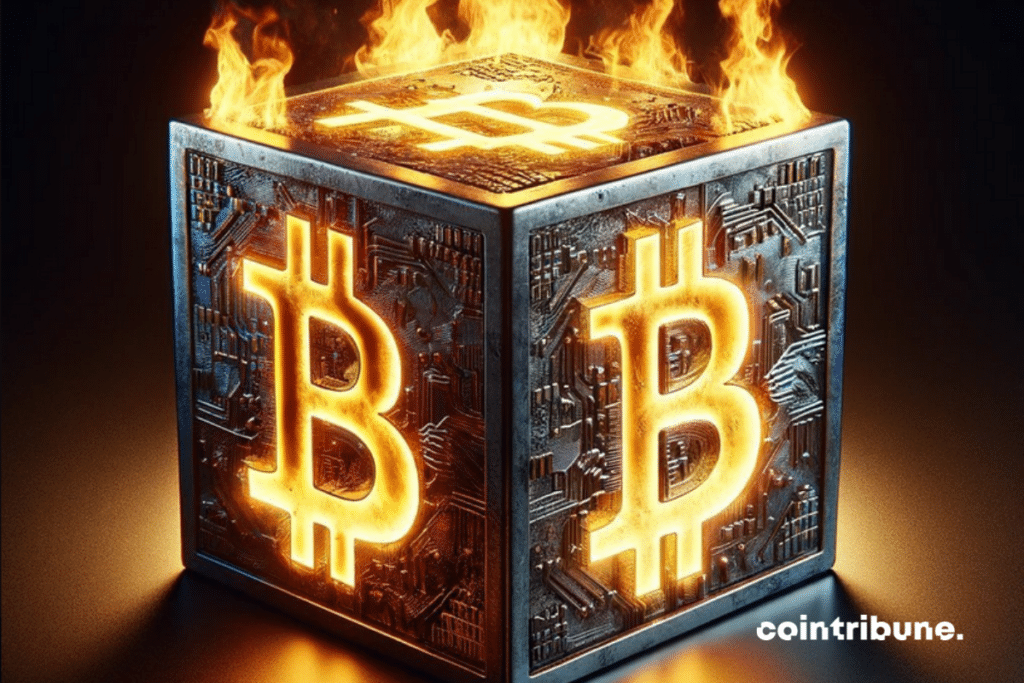Bitcoin's hash rate hit an all time high 500 exahashes/s this month.
— Yassine Elmandjra (@yassineARK) January 19, 2024
To highlight the enormity of this number:
– For every star in our galaxy, the Bitcoin network is calculating 5 billion computations per second.
– It would take ~2000 years for the entire global population,… pic.twitter.com/Ki4jOxmliO
A
A
Bitcoin - Putting its colossal computing power into perspective
Fri 19 Jan 2024 ▪
2
min read ▪ by
Getting informed
▪
Bitcoin recently surpassed the 500 EH/s mark. That is, 500 quintillion hashes per second. Let’s put that into perspective.

Bitcoin, how many legions? 500.
The quantity of hash generated at the end of 2023 was 102% higher than a year before. Miners doubled their power!
Which, by the way, does not mean that Bitcoin consumes twice as much electricity. Many much more efficient machines are replacing older models that are three to five times less efficient.
Not to mention the democratization of new cooling techniques such as immersion in a heat transfer liquid which further increase efficiency by 50% to 85%.
Bitcoin is backed by the largest computing power in the world. It outstrips by several orders of magnitude that of the clouds built by Amazon, Google, and Microsoft over the last 15 to 20 years.
The reason is that BTC miners do not use just any electronic chips. They use ASICs (Application-Specific Integrated Circuit) specifically dedicated to the SHA-256 algorithm.
So much so that the Bitcoin hashrate now exceeds the colossal figure of 500 exahash/s. Here’s a perspective by Yassine Elmandjra:
-“For every star in our galaxy, the Bitcoin network performs five billion calculations per second.”
-“It would take ~2000 years for the entire world’s population, producing one hash per second each, to reach the Bitcoin hashrate.”
-“The Bitcoin network produces ~67 times more hashes per second than there are grains of sand on Earth.”
-“In terms of raw operations per second, Bitcoin is ~500 times more powerful than the world’s most powerful supercomputer.”
In other words, Bitcoin is not based on nothing but on gigawatts of encrypted energy. The complete opposite of Ethereum’s Proof of Stake, which relies on the shoulders of the wealthiest users…
Maximize your Cointribune experience with our "Read to Earn" program! For every article you read, earn points and access exclusive rewards. Sign up now and start earning benefits.
A
A
Bitcoin, geopolitical, economic and energy journalist.
DISCLAIMER
The views, thoughts, and opinions expressed in this article belong solely to the author, and should not be taken as investment advice. Do your own research before taking any investment decisions.